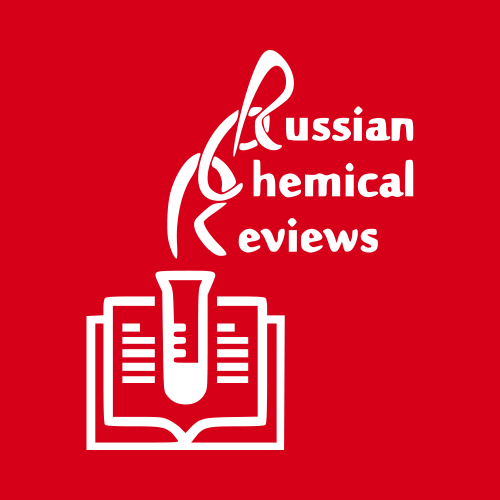Molecular dynamics simulation of diffusion in a (110) B2-NiAl film
1
The University of Newcastle, Priority Research Centre for Geotechnical and Materials Modelling, The University Center for Mass and Thermal Transport in Engineering Materials, School of Engineering, Callaghan, NSW 2308, Australia
|
Тип публикации: Journal Article
Дата публикации: 2011-07-01
scimago Q1
wos Q1
БС1
SJR: 1.140
CiteScore: 7.7
Impact factor: 4.8
ISSN: 09669795, 18790216
Materials Chemistry
Metals and Alloys
General Chemistry
Mechanical Engineering
Mechanics of Materials
Краткое описание
We report on the first direct molecular dynamics study of diffusion in B 2-NiAl using one of the most reliable embedded-atom method potentials for this phase. The simulation is performed for near the stoichiometric composition at a temperature just below the melting temperature of the model. In the molecular dynamics simulation, an equilibrium point-defect concentration is generated and maintained by using a film sample with periodic boundary conditions only in two directions and free surfaces in the third direction. Two types of point defects – Ni vacancies and Ni antisites – are found in the bulk of the model. It is demonstrated that isolated Ni vacancies strongly dominate in concentration over all of their bound complexes with Ni antisites. Although we predict that some attractive interactions should occur between point defects to form bound Ni vacancy-Ni antisite pairs and bound Ni antisite-Ni vacancy-Ni antisite complexes, only about 2% of Ni vacancies and 1% of Ni antisites statistically randomly associate to form bound Ni vacancy-Ni antisite-Ni vacancy complexes (the so-called bound triple-defect complex). As a result, it is deduced that the triple-defect diffusion mechanism is not likely to be the dominant diffusion mechanism in the bulk of the model because this diffusion mechanism effectively requires that the Ni vacancies and Ni antisites must form bound triple-defect complexes. Furthermore, it is found that Ni atoms diffuse in the bulk of the model on average about 2.5 times faster than Al atoms. Therefore, we suggest that isolated Ni vacancies are likely to play a key role in atomic diffusion of both Ni and Al near the stoichiometric composition of B 2-NiAl and, consequently, the most plausible and widely accepted candidate for dominant diffusion mechanism in B 2-NiAl can be considered to be six-jump cycles of a Ni vacancy. Furthermore, we can suppose that additional next-nearest-neighbor jumps of a Ni vacancy may cause that Ni atoms diffuse faster than Al atoms. ► Direct molecular dynamics study of diffusion in B 2-NiAl phase near the stoichiometry. ► Equilibrium point-defect concentration is generated and maintained by using a film sample. ► Mutual Ni vacancy and Ni antisite distribution is analyzed. ► Ni and Al self-diffusion coefficients are estimated. ► Isolated Ni vacancies play the key role in atomic diffusion of both Ni and Al.
Найдено
Ничего не найдено, попробуйте изменить настройки фильтра.
Найдено
Ничего не найдено, попробуйте изменить настройки фильтра.
Топ-30
Журналы
|
1
2
|
|
|
The Philosophical Magazine
2 публикации, 11.76%
|
|
|
Journal of Applied Physics
1 публикация, 5.88%
|
|
|
Materials
1 публикация, 5.88%
|
|
|
Welding in the World, Le Soudage Dans Le Monde
1 публикация, 5.88%
|
|
|
Intermetallics
1 публикация, 5.88%
|
|
|
Acta Materialia
1 публикация, 5.88%
|
|
|
Advanced Powder Technology
1 публикация, 5.88%
|
|
|
Applied Surface Science
1 публикация, 5.88%
|
|
|
Computational Materials Science
1 публикация, 5.88%
|
|
|
Theoretical and Applied Fracture Mechanics
1 публикация, 5.88%
|
|
|
Advanced Engineering Materials
1 публикация, 5.88%
|
|
|
Physical Chemistry Chemical Physics
1 публикация, 5.88%
|
|
|
Physics of Metals and Metallography
1 публикация, 5.88%
|
|
|
Advances in Science and Technology
1 публикация, 5.88%
|
|
|
Russian Chemical Reviews
1 публикация, 5.88%
|
|
|
Corrosion Science
1 публикация, 5.88%
|
|
|
1
2
|
Издатели
|
1
2
3
4
5
6
7
|
|
|
Elsevier
7 публикаций, 41.18%
|
|
|
Taylor & Francis
2 публикации, 11.76%
|
|
|
AIP Publishing
1 публикация, 5.88%
|
|
|
MDPI
1 публикация, 5.88%
|
|
|
Springer Nature
1 публикация, 5.88%
|
|
|
Wiley
1 публикация, 5.88%
|
|
|
Royal Society of Chemistry (RSC)
1 публикация, 5.88%
|
|
|
Pleiades Publishing
1 публикация, 5.88%
|
|
|
Trans Tech Publications
1 публикация, 5.88%
|
|
|
Autonomous Non-profit Organization Editorial Board of the journal Uspekhi Khimii
1 публикация, 5.88%
|
|
|
1
2
3
4
5
6
7
|
- Мы не учитываем публикации, у которых нет DOI.
- Статистика публикаций обновляется еженедельно.
Вы ученый?
Создайте профиль, чтобы получать персональные рекомендации коллег, конференций и новых статей.
Метрики
17
Всего цитирований:
17
Цитирований c 2024:
2
(11.76%)
Цитировать
ГОСТ |
RIS |
BibTex |
MLA
Цитировать
ГОСТ
Скопировать
Evteev A. V. et al. Molecular dynamics simulation of diffusion in a (110) B2-NiAl film // Intermetallics. 2011. Vol. 19. No. 7. pp. 848-854.
ГОСТ со всеми авторами (до 50)
Скопировать
Evteev A. V., Levchenko E. V., Belova I. V., Murch G. E. Molecular dynamics simulation of diffusion in a (110) B2-NiAl film // Intermetallics. 2011. Vol. 19. No. 7. pp. 848-854.
Цитировать
RIS
Скопировать
TY - JOUR
DO - 10.1016/j.intermet.2011.01.010
UR - https://doi.org/10.1016/j.intermet.2011.01.010
TI - Molecular dynamics simulation of diffusion in a (110) B2-NiAl film
T2 - Intermetallics
AU - Evteev, Alexander V
AU - Levchenko, Elena V
AU - Belova, Irina V.
AU - Murch, G. E.
PY - 2011
DA - 2011/07/01
PB - Elsevier
SP - 848-854
IS - 7
VL - 19
SN - 0966-9795
SN - 1879-0216
ER -
Цитировать
BibTex (до 50 авторов)
Скопировать
@article{2011_Evteev,
author = {Alexander V Evteev and Elena V Levchenko and Irina V. Belova and G. E. Murch},
title = {Molecular dynamics simulation of diffusion in a (110) B2-NiAl film},
journal = {Intermetallics},
year = {2011},
volume = {19},
publisher = {Elsevier},
month = {jul},
url = {https://doi.org/10.1016/j.intermet.2011.01.010},
number = {7},
pages = {848--854},
doi = {10.1016/j.intermet.2011.01.010}
}
Цитировать
MLA
Скопировать
Evteev, Alexander V., et al. “Molecular dynamics simulation of diffusion in a (110) B2-NiAl film.” Intermetallics, vol. 19, no. 7, Jul. 2011, pp. 848-854. https://doi.org/10.1016/j.intermet.2011.01.010.











